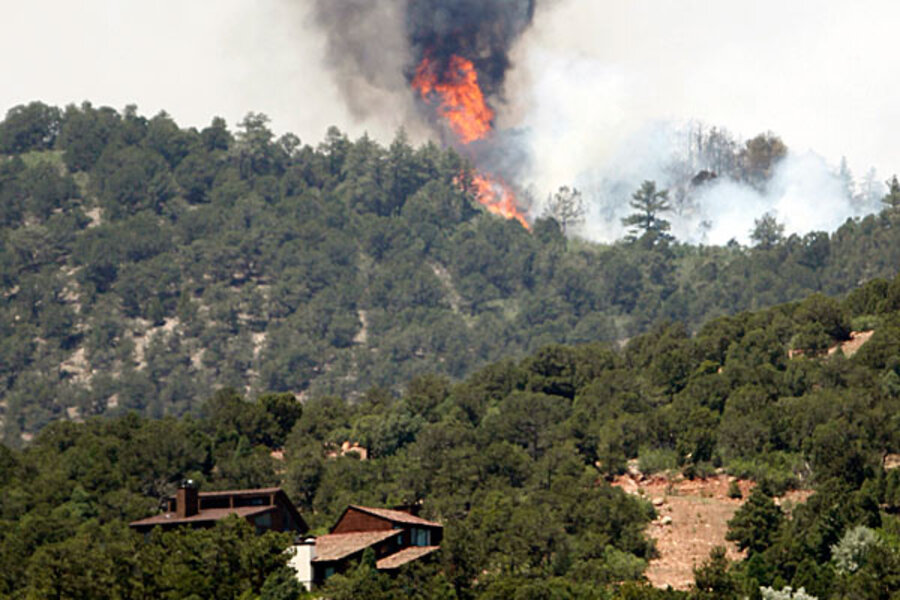Colorado wildfires move toward US Air Force Academy
Loading...
| Colorado Springs, Colo.
An out-of-control wildfire near some of Colorado's most visited tourist sites expanded overnight, keeping some 6,000 people from their homes on Monday, and forecasts said winds could push the flames toward the United States Air Force Academy.
On Monday morning, the Waldo Canyon fire near Colorado Springs, about 80 miles south of Denver, continued to burn near the base of Pikes Peak, whose vistas helped inspire the patriotic tune "America the Beautiful."
The fire had prompted the evacuation of 11,000 people on Sunday but residents of the town of Manitou Springs, often used as a base for visits to Pikes Peak, had been allowed home, leaving 6,000 people still displaced.
IN PICTURES: Wildfires sweep the West
The fire was raging about six to 10 miles from the Air Force Academy as winds fanned the flames in its direction, and fire authorities listed the academy as being threatened by the blaze along with utilities, flood control structures and watershed.
A recreation area belonging to the Academy was ordered evacuated due to its proximity to the fire, and all trails leading west of the school were closed as a precaution, the base said on Monday.
But the blaze would still have to traverse rough terrain, burning down through steep canyons and up mountain ridges, before it would reach the Air Force Academy itself, Academy spokesman Meade Warthen said.
"We don't have any reason at this particular point to think were going to be inundated, but we're standing by," Warthen said. "There are contingency plans in place. If we need to implement them, we will."
The Department of Homeland Security said it was providing the Federal Emergenchy Management Agency financial assistance to help battle the Waldo Canyon and other fires, noting the blaze's threat to 250 homes in the area.
On Sunday, El Paso County spokesman Dave Rose said the fire was burning two miles from the base of Pikes Peak, billed as the most visited mountain in North America.
The Waldo Canyon blaze came as firefighting resources were stretched by the monster High Park blaze northwest of Fort Collins, a university city north of Denver along the state's tinder-dry Front Range.
The High Park Fire - the second-largest on record in the state and its most destructive - has consumed 83,205 acres in steep canyons since it was sparked by lightning two weeks ago. It is blamed for the death of a 62-year-old grandmother in her mountain cabin and has destroyed 248 homes.
An estimated 4,300 people remain evacuated from their homes as that fire burns through grass, brush and Ponderosa pine.
In southwestern Colorado, the Weber Fire grew to 8,300 acres overnight but firefighters held it about one mile southeast of the small town of Mancos, east of Mesa Verde National Park.
Between 40 to 50 homes were evacuated and residents of Mancos were on evacuation warning, fire information officer Mary Huels said.
A dozen fires in total are burning across Colorado, with high temperatures projected to top 100 degrees again on Monday expected to cause "extreme" fire behavior, officials said. (Additional reporting by Ellen Miller in Grand Junction; Writing and additional reporting by Mary Slosson; Editing by Eric Walsh)





